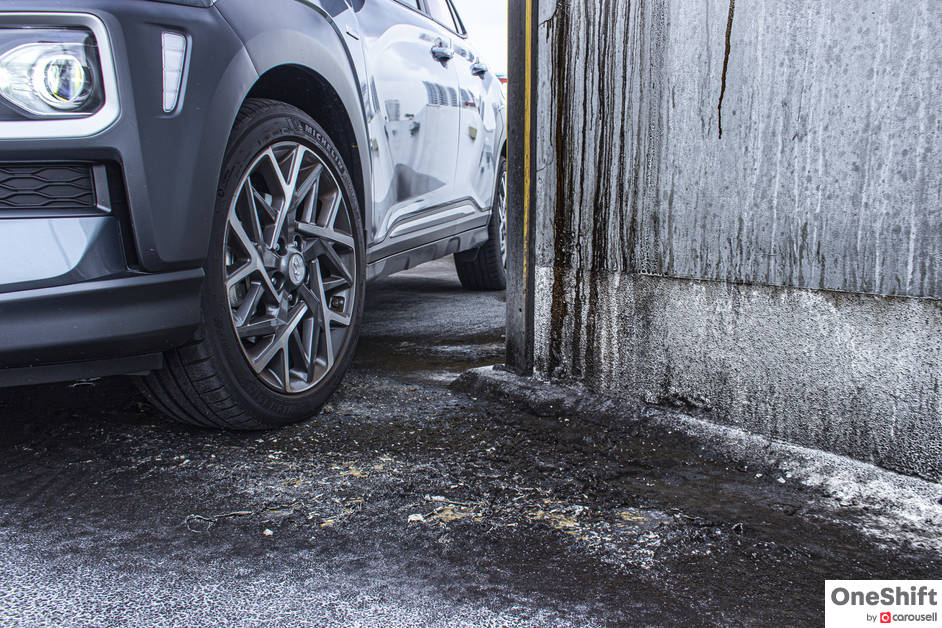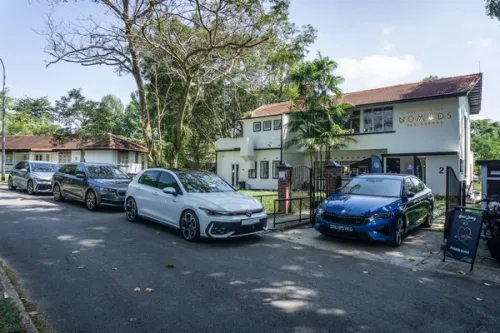Treading Lightly
The Korean manufacturer has been on a full-on product offensive of late, especially with their hybrid and EVs. So it is only natural that the Kona also gets a new drivetrain.


Hyundai now offers a hybrid drivetrain to their Kona Crossover, complementing the electric variant currently on offer. It was not too long ago when Hyundai introduced this quirky compact to us, initially with conventional engines; a frugal 1.0 turbocharged 3-cylinder with a very pleasant to use manual transmission, and a 1.6 turbo with AWD, which was heaps of fun to drive.

The Korean manufacturer has been on a full-on product offensive of late, especially with their hybrid and EVs. So it is only natural that the Kona also gets a new drivetrain.

The Kona shows off Hyundai’s current SUV design language, which includes its signature cascading grille and stacked headlamps, the latter which includes slit style modules just above the grille. The same design language has also trickled over to the up-coming Santa Fe.

With the introduction of the hybrid drivetrain, the “slightly green” Kona also gets a new set of rims, 16” for the standard car, and 18” for the variant with the sunroof seen here.
If you have not stepped into a Hyundai of late, you would be surprised that the interiors have come a long way. Switchgear does not feel cheapskate anymore, and it is on-par with many Japanese brands. One of the things I do appreciate is their 7” factory infotainment display, that supports both Android Auto and Apple CarPlay. You still get physical buttons here, meaning that searching for the right functions is truly a breeze. Most of the interior fittings are shared with its ICE siblings, rather than the full-electric one. The mechanical handbrake has been swapped out for an electronic one, making the centre console a little neater.

The most valuable feature in the sunroof variant of the Kona Hybrid to me, is the ventilated front seats; a feature normally reserved for more luxurious cars. This comes useful during warm days, where a steady stream of cool air up your behind can make all the difference. You will also get a Head-up Display, which projects important driving information within your line of sight, a wireless phone charger and electrically adjustable driver and front passenger seats.

While it is compact in dimensions, the Kona does accommodate four adults well, with rear passengers getting up to 880mm of stretch space. The cargo area offers you a decent 361 litres; and it looks like the Koreans have been listening, since the earlier cars did not come equipped with a cargo cover to prevent the problem of prying eyes. Rear seats fold in 60:40 fashion, upping space to 1,143 litres, allowing you to haul even more.

Hyundai’s proven 1.6 Kappa Direct Injection engine paired with an electric motor, which first saw life in the Ioniq (their hatch has by the way been updated for the third time since launch), powers the Kona Hybrid. The engine alone is good for 105bhp and 147Nm, while the electric motor supplements this, with 43.5bhp and 170Nm, producing combined system delivery of 130bhp and 265Nm.

The Kona utilises a 6-speed Dual-Clutch Transmission to drive the front wheels, with maximum torque available from 1,500rpm. Delivery of its drive is quite instantaneous, with the electric motor helping the car along, before the engine spins to life. The Kona is built with the intent of offering fuel savings and not performance. Hyundai claims 23.3km/l (4.3L/100km) combined, we on the other hand clocked about 18.2km/l, which is still good.

Hyundai has attempted to make the Kona a little more engaging to drive. They have incorporated the quick activation of ‘Sport’ mode, done with a lug of the downshifting steering wheel-mounted pedal, which drops gear at the same time for quicker overtaking ability. However, switching back to normal drive mode does take a while, and in the meantime, you might be annoyed by the engine’s overly-vocal characteristics at higher rpms, while the transmission remains stubbornly sticky to lower gears... We go back to the earlier point, that the Kona Hybrid does well as a fuel-sipper and not a performance-oriented car.

Hyundai developed two rear suspension setups for the Kona, a multi-link and a cheaper-to-build torsion beam. While the 1.0, which was available when the car was initially launched, used the latter and rode quite well... as long as it didn’t skip over bumps; this hybrid model is equipped with the costlier multi-link, which gives it a more composed drive.

The ‘Sunroof’ variant which is about $9 more than the standard car might be the one for you, if you are one to spend plenty of time on the road; not because of the sunroof, but because of the ventilated seats which adds to improved driving comfort, and that wireless charging pad to keep your mobile phone running.
The Hyundai SmartSense technology package, which is standard equipment helps by adding an additional layer of safety to occupants, by constantly monitoring the environment around the vehicle, and warns the driver of potential road hazards. Together with its SmartSense technology, the Kona Hybrid is also equipped with Front Collision Warning and Avoidance Assist, which uses a front-facing radar to spot potential trouble. It also has the ability to recognise pedestrians and cyclists. The same system also forms part of Hyundai’s Smart Cruise Control (SCC) with Stop & Go. The intelligent cruise control suite helps to regulate the car’s speed in relation to traffic in-front, and is also able to stop the car if the vehicle in-front comes to a halt. It can be reactivated with a brief tap of the accelerator.
At a dollar off $128k* (or likewise $119k* for the standard model), the Kona has quite a bit of competition from its cousin, the Kia Niro Hybrid. The base car sets you back competitively at about $114k*. If you are thinking green, or at least “kind-of-green”, there is also the recently-launched Nissan Kicks, with its quirky engine-powered, battery driven e-Power drivetrain, though the Kona does trump it quite easily with its interior quality.
You also have a vast selection of similarly-sized “less-green” cars to choose from at a similar or lower price point, if you are not planning to clock greater-than-average mileage during your ownership journey.
*Accurate as at 15 Sep 2020
Credits: Words and Photos by Clifford Chow








Get the Best Price for your used car
from 500+ dealers in 24 hours

- Convenient and Hassle-Free
- Consumer Protection
Transparent Process
With No Obligation







